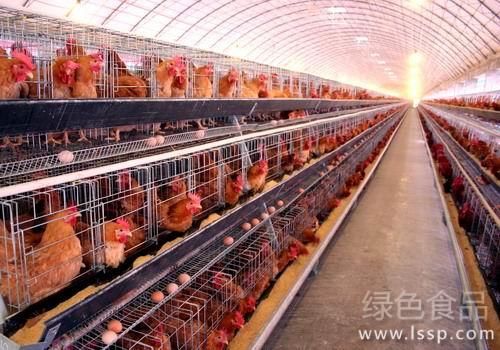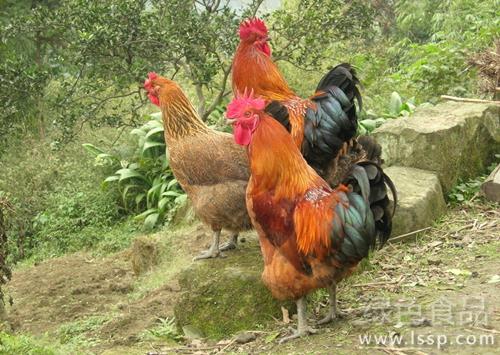Calcium supplement is needed for laying hens. Calcium supplementation for caged laying hens
Caged laying hens often produce a certain number of soft-shell and thin-shell eggs, especially before the peak of egg production, reducing production efficiency. The main reason is that the calcium intake of laying hens does not meet the normal needs of the laying period. Practice has proved that calcium supplementation for caged laying hens is not only simple and easy, but also can prevent soft shell and thin shell eggs. The specific methods are as follows:

Laying hens
First, calcium material selection. Eggshell powder is the best, followed by shell powder and bone powder. Because the size of eggshell powder is uniform, which accords with the feeding habits of laying hens, and the sizes of shell powder and bone powder are different, which affect the pecking effect, other fine powdered calcium feeds are not suitable for supplementary feeding of laying hens.
Second, the quantity of supplementary feeding. The amount of calcium supplement should be determined according to the proportion of soft shell and thin shell eggs. Stop feeding when soft shell and thin shell eggs basically disappear and laying hens are unwilling to peck at calcium. If the eggshell is not smooth, there are protuberant calcium spots, it means too much calcium supplement. It is usually about 0.5 kg per 100 laying hens.
Third, the time of supplementary feeding. Supplementary feeding is available from afternoon to night before lights out, but it is best at 2-4 p.m. According to the measurement, most of the calcium absorbed by laying hens in the morning is hidden in the bones, while the calcium absorbed in the afternoon or evening is directly used for the formation of eggshells on the same day, and the feeding peak of the day is from 2 to 4 p.m., with the strongest appetite and the fastest and most eating.
Fourth, supplementary feeding method. If you are free to eat, let the layers eat up the feed in the trough after 2 p.m., and spread the calcium evenly in the trough half an hour later when the layers have a certain appetite; if fed regularly, they can be fed with calcium before feeding in the afternoon, and then fed with full-price feed. Either way, it is necessary to ensure that all laying hens can eat calcium at the same time, so as to achieve the purpose of supplementary feeding.
- Prev

Chicken disease affects chicken weight gain and laying hens need disease prevention prescription to help you.
Chicken disease affects chicken weight gain and laying hens need disease prevention prescription to help you.
- Next

Key points of feeding and management of young rabbits with weak physique, poor disease resistance and easy to die
Key points of feeding and management of young rabbits with weak physique, poor disease resistance and easy to die
Related
- On the eggshell is a badge full of pride. British Poultry Egg Market and Consumer observation
- British study: 72% of Britons are willing to buy native eggs raised by insects
- Guidelines for friendly egg production revised the increase of space in chicken sheds can not be forced to change feathers and lay eggs.
- Risk of delay in customs clearance Australia suspends lobster exports to China
- Pig semen-the Vector of virus Transmission (4)
- Pig semen-the Vector of virus Transmission (3)
- Five common causes of difficult control of classical swine fever in clinic and their countermeasures
- Foot-and-mouth disease is the most effective way to prevent it!
- PED is the number one killer of piglets and has to be guarded against in autumn and winter.
- What is "yellow fat pig"? Have you ever heard the pig collector talk about "yellow fat pig"?

